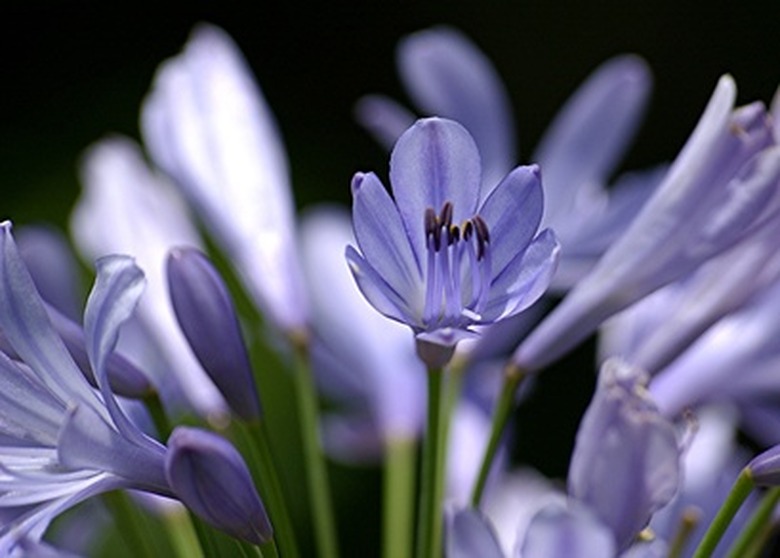Agapanthus Diseases
Agapanthus, known as Lily of the Nile, is a herald of summer. Blue, funnel-shaped flowers cluster atop the plant's long stalks, which spring out of strappy green leaves. This perennial is a favorite with hummingbirds, and it looks great in containers or mass plantings. Generally, agapanthus is a low-maintenance plant with few problems, though it is susceptible to a few diseases.
Botrytis
Boytrytis (Botrytis cinerea) is a fungal disease that appears during warm and damp weather. It appears as gray or brown lesions on the plant and may attack the flowers, preventing them from opening. Other symptoms include red stripes on the leaves and stems. It is not fatal to the plant, and there is no cure. Botrytis-resistant varieties of agapanthus are available.
- Agapanthus, known as Lily of the Nile, is a herald of summer.
- Generally, agapanthus is a low-maintenance plant with few problems, though it is susceptible to a few diseases.
Powdery Mildew
Powdery mildew is a fungal growth that appears as a dusty gray or white circles on plant surfaces. The coating expands and grows together, producing a mat of mildew. Spray sulfur fungicide or neem oil on your plant before the infection is too widespread. Collect and destroy all infected leaves or branches, and make sure your plant is receiving enough air circulation to reduce humidity.
Tomato Spotted Wilt Virus
The tomato spotted wilt virus occasionally will infect aganpanthus. Symptoms include irregular blotches, concentric ring and line patterns, and streaks on the leaves. The virus will cause the agapanthus to become severely stunted and fail to flower. Young plants may turn brown and collapse. The virus is transmitted by thrips, tiny insects with fringed wings. Spray plants with insecticidal soap, and control weeds near your plants.
- Powdery mildew is a fungal growth that appears as a dusty gray or white circles on plant surfaces.
- The virus will cause the agapanthus to become severely stunted and fail to flower.
Fungus
The fungus Macrophoma agapanthus may attack agapanthus's foliage, causing the leaves to die back. Symptoms include dead-tipped, lighter green olive leaves in the middle of the plant. Get rid of the fungus with a fungicide containing mancozeb or captab.
Thin Agapanthus
Water the agapanthus to a depth of 12 inches the day before dividing. Use pruning shears or hedge trimmers to cut the foliage to half its current height. Insert the shovel or spade into the soil at the outside edge of the clump of agapanthus, 8 inches away from the base. Drive it into the soil to cut the roots. Lift the shovel, and insert it again and again until you've carved a circle around the clump. If the roots are tough and woody and tightly packed together, use an axe or the end of the shovel driven between the roots to cut them apart. Dig holes 3 inches deep, 6 inches wide and 1 foot apart.
- The fungus Macrophoma agapanthus may attack agapanthus's foliage, causing the leaves to die back.
- Insert the shovel or spade into the soil at the outside edge of the clump of agapanthus, 8 inches away from the base.
